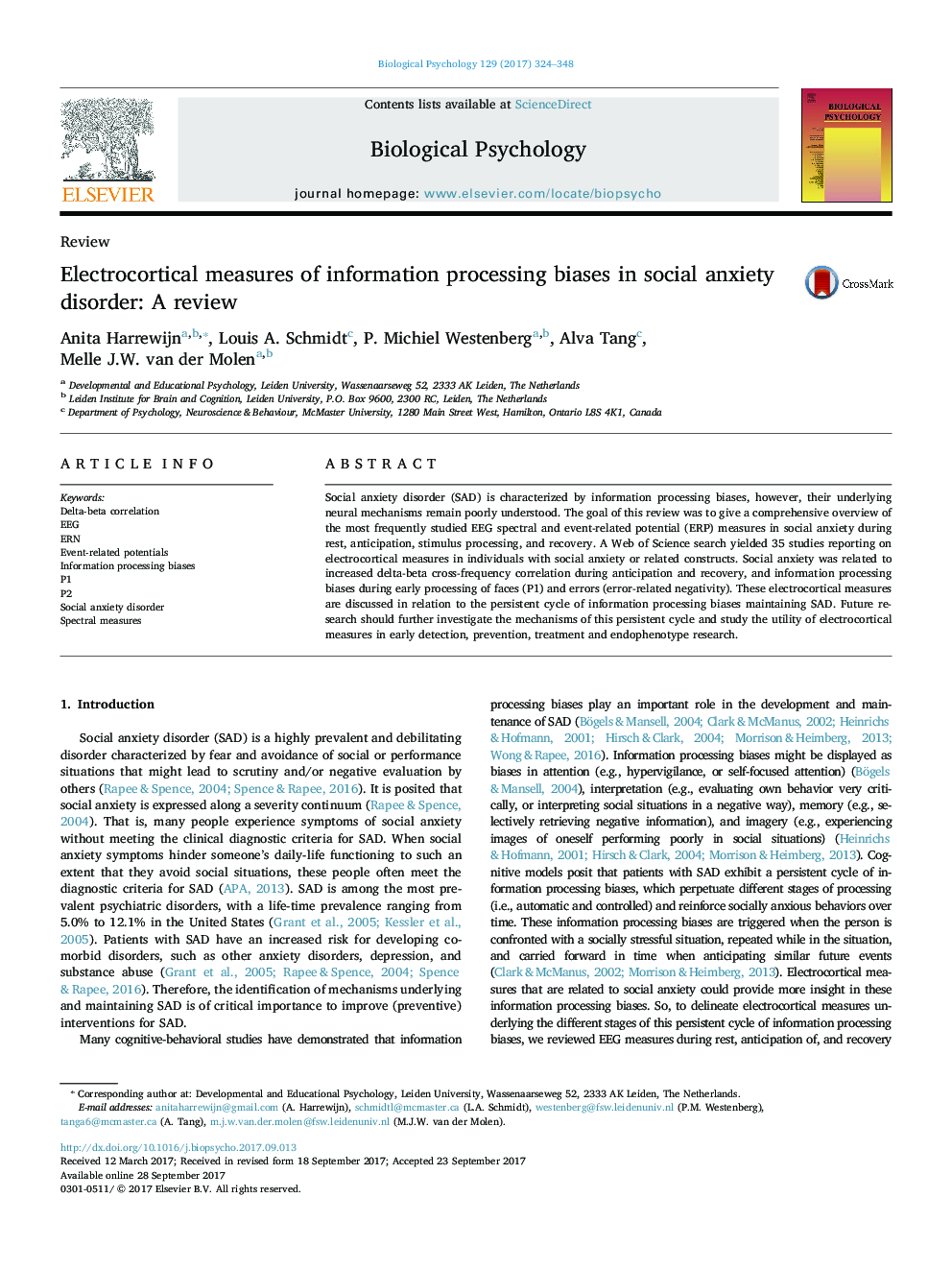| کد مقاله | کد نشریه | سال انتشار | مقاله انگلیسی | نسخه تمام متن |
|---|---|---|---|---|
| 5040365 | 1473845 | 2017 | 25 صفحه PDF | دانلود رایگان |
- Social anxiety disorder is related to information processing biases.
- EEG studies are reviewed to find measures of these information processing biases.
- Delta-beta correlation reflects anticipatory anxiety and post-event rumination.
- Increased P1 amplitude in social anxiety indexes hypervigilance.
- Increased ERN in social anxiety reflects self-focused attention or perfectionism.
Social anxiety disorder (SAD) is characterized by information processing biases, however, their underlying neural mechanisms remain poorly understood. The goal of this review was to give a comprehensive overview of the most frequently studied EEG spectral and event-related potential (ERP) measures in social anxiety during rest, anticipation, stimulus processing, and recovery. A Web of Science search yielded 35 studies reporting on electrocortical measures in individuals with social anxiety or related constructs. Social anxiety was related to increased delta-beta cross-frequency correlation during anticipation and recovery, and information processing biases during early processing of faces (P1) and errors (error-related negativity). These electrocortical measures are discussed in relation to the persistent cycle of information processing biases maintaining SAD. Future research should further investigate the mechanisms of this persistent cycle and study the utility of electrocortical measures in early detection, prevention, treatment and endophenotype research.
Journal: Biological Psychology - Volume 129, October 2017, Pages 324-348
